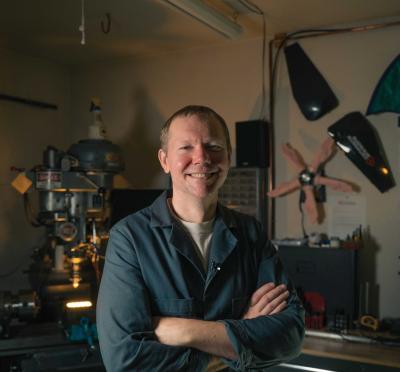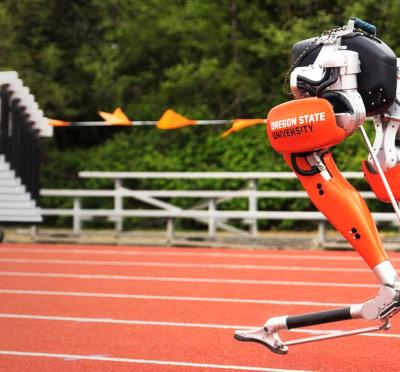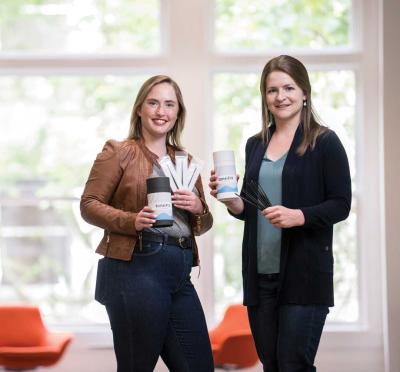
Photo by Shivani Jinger
Mechanical engineering students presented their final projects for the ENGAGE program on June 8 at a showcase held in Covell Hall. The event gave students the opportunity to exhibit posters and models, demonstrate prototypes, and answer questions from College of Engineering attendees.
“This has been a great experience for the students,” said Dylan Bennett, an upper-division mechanical engineering student who served as a teaching assistant and mentor. “It’s a fun way to get involved in a hands-on project, work on a team to solve a real engineering problem, and get some experience in presenting.”
The ENGAGE program was offered as a two-term technical elective sequence, in which students address technical engineering projects — for fun or for credit — in an inclusive, supportive environment among peers and mentors. It is hosted by the School of Mechanical, Industrial, and Manufacturing Engineering under the leadership of MIME instructor Mark McGuire.
“This type of experiential learning is proving essential for preparing engineering students to engage in the hands-on demands of industry,” McGuire said.
The program focuses on two “grand challenges.” The Space Race challenge aims to make Oregon State University the first to launch a liquid-fuel rocket to the edge of space, in partnership with the Oregon Space Grant. The Victory Garden challenge is a humanitarian engineering project to develop “the most energy-efficient tractor on planet Earth” by expanding an open-source platform, sponsored by Sol Cycle Farm.
During the winter term, teams focused on project design, to be fleshed out in the spring with prototyping, testing, and refinement. Mechanical engineering student Kate Zabinski was part of a team of seven students working with the OSU High Altitude Liquid Engine rocket team on an electromechanical separation sub-assembly.
“We had a good division of labor on our team,” Zabinski said. “Each of us served as a technical lead for one aspect of the project — things like materials, manufacturing, springs, motor, Arduino coding — and we worked collaboratively to make sure everything fit together the way it’s supposed to, within the timeframe of the project.”
The team encountered plenty of challenges along the way. Although they made significant progress over the course of the 10-week term, there’s still work to be done, Zabinski said.
“Materials were a key issue early on,” she said. “Working with 3D-printed parts that are subject to mechanical loads, you have to make sure they are strong enough. In some cases, we needed to substitute commercially available parts. Moving forward, we would like to see better separation power from the springs, and the motor we used did not have enough torque. So, the next team can build on what we’ve learned.”
Learn more about the ENGAGE Program



